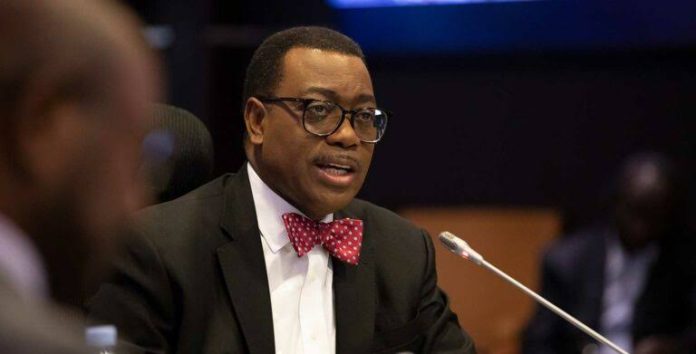News Investigators/ The African Development Bank (AfDB) President, Akinwumi Adesina, has called for a major shift in how Africa’s vast natural resources are valued.
Mr Adesina in a statement, made the call at the COP 29 High-Level Event on “Measuring the Green Wealth of Nations: Natural Capital and Economic Productivity in Africa.
He called for the inclusion of “Green Gross Domestic Product” (Green GDP) in the continent’s economic calculations.
The AfDB president said this challenge had made it difficult for African nations to access the financial resources needed to drive sustainable development.
He said the GDP of Africa estimated at 2.5 trillion dollars in 2018, was 2.5 times lower than the value of its natural capital, evaluated at 6.2 trillion dollars.
“When the value of Africa’s vast forest and environmental services, and natural capital, are properly valued, the size of its rebased Gross domestic Product (GDP) taking this into account will be much higher.
“The AfDB’s preliminary estimates, based on very conservative assumptions, show that Africa’s nominal GDP in 2022 could have increased by 66.1 billion dollars when adjusted for carbon sequestration only.
“That is more than the combined GDP of 42 African countries!
“The proper valuation of Africa’s green GDP is where the trillions of dollars for the continent, based on proper valuation, will come from, to boost the wealth and financing of the continent,’’ he said.
According to the AfDB boss, the greening of the GDP will also have other benefits, including the development of carbon markets in Africa.
“Unfortunately, today, several African countries are giving away their vast amounts of land to carbon credits. While this may generate some short-term financing, it needs to be understood that Africa is a carbon price taker and is short-changed.
“While the price of carbon in Europe is high and could be as high as 200 dollars per ton because of the strict EU Emission Trading Standards, carbon price in Africa could be as low as three to 10 dollars per ton,’’ he said.
Mr Adesina listed some consequences of the widespread sales of vast areas of Africa’s lands rich in carbon, (carbon grab) to include, underpayment of the carbon due to undervaluation.
He said :“the sequestered carbon on the lands will no longer be used as part of the nation’s nationally determined contributions and the countries will lose sovereignty over their lands.
`The carbon sequestered over these lands and forests cannot be used to rebase and revalue the green GDP of the countries and the ongoing carbon grab in Africa is a lose-lose proposition.’’
Mr Adesina said Africa had some of the largest sources of natural capital in the world, including over 40 per cent of the world’s clean energy potential.
According to him, the continent has 65 per cent of the world’s uncultivated arable land; 25 per cent of global biodiversity; and 20 per cent of the world’s tropical rainforest area.
He said the Congo Basin was the second largest carbon lung in the world after the Amazon forest and it stretches 314 million hectares with 1.2 million kilometers of primary forest.
“The peatlands of the Congo Basin store 29 billion tons of carbon, equivalent to 3 years’ worth of global greenhouse gas emission and it absorbs about 1.5 billion tons of carbon dioxide per year.
“Africa’s forests account for 26 per cent of all carbon sequestration in forests worldwide, it holds considerable non-renewable natural resources, accounting for 50 per cent of the world’s reserves of cobalt (used for batteries).
“It accounts for 40 per cent of manganese reserves (used in solar and wind farms) and more than 80 per cent of platinum reserves, complemented by rich endowments of nickel, copper, and rare earth minerals.
“These are crucial for global green energy transition with electric vehicles and battery energy storages systems, whose estimated value is expected to rise from 7.5 trillion to 59 trillion dollars,’’ Adesina said.
Mr Adesina, explained that proper valuation of Africa’s green wealth would increase access to financial flows, as credit ratings agencies would incorporate the true value of overall asset to improve countries’ risk profile.
“Therefore, it is time for Africa’s green environmental assets to be properly priced to allow the continent to turn its massive green assets into wealth, through their inclusion in “green’ GDP for Africa.
“This will raise massive financial resources for the continent, spur greater green investments and provide better policies for the greening of African economies for sustainable development.
“The significantly higher revenues that Africa will generate from the proper valuation of its carbon sinks and environmental services will also allow it to be able to service its debts, assuring debt sustainability,’’ he said.
NAN

